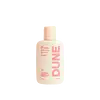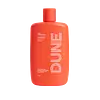What's inside
What's inside
 Key Ingredients
Key Ingredients

 Benefits
Benefits

 Concerns
Concerns

 Ingredients Side-by-side
Ingredients Side-by-side

Butyl Methoxydibenzoylmethane
UV AbsorberHomosalate
Skin ConditioningEthylhexyl Salicylate
UV AbsorberOctocrylene
UV AbsorberWater
Skin ConditioningDimethicone
EmollientPropanediol
SolventAlcohol Denat.
AntimicrobialCapryloyl Glycerin/Sebacic Acid Copolymer
Skin ConditioningGlycerin
Humectant1,2-Hexanediol
Skin ConditioningSodium Polyacryloyldimethyl Taurate
Emulsion StabilisingBrassica Glycerides
EmollientAcrylates/C10-30 Alkyl Acrylate Crosspolymer
Emulsion StabilisingCaprylhydroxamic Acid
Polysilicone-11
Aminomethyl Propanol
BufferingDisodium EDTA
Erythritol
HumectantTocopheryl Acetate
AntioxidantButylene Glycol
HumectantMelia Azadirachta Leaf Extract
Skin ConditioningPolygonum Aviculare Extract
EmollientMelia Azadirachta Flower Extract
Skin ConditioningHibiscus Esculentus Fruit Extract
Skin ConditioningBisabolol
MaskingDecyl Glucoside
CleansingZingiber Officinale Root Extract
MaskingButyl Methoxydibenzoylmethane, Homosalate, Ethylhexyl Salicylate, Octocrylene, Water, Dimethicone, Propanediol, Alcohol Denat., Capryloyl Glycerin/Sebacic Acid Copolymer, Glycerin, 1,2-Hexanediol, Sodium Polyacryloyldimethyl Taurate, Brassica Glycerides, Acrylates/C10-30 Alkyl Acrylate Crosspolymer, Caprylhydroxamic Acid, Polysilicone-11, Aminomethyl Propanol, Disodium EDTA, Erythritol, Tocopheryl Acetate, Butylene Glycol, Melia Azadirachta Leaf Extract, Polygonum Aviculare Extract, Melia Azadirachta Flower Extract, Hibiscus Esculentus Fruit Extract, Bisabolol, Decyl Glucoside, Zingiber Officinale Root Extract
Water
Skin ConditioningHydrogenated Ethylhexyl Olivate
EmollientPropanediol
SolventMenthyl Ethylamido Oxalate
Skin ConditioningGlycerin
HumectantPotassium Cetyl Phosphate
Emulsifying1,2-Hexanediol
Skin ConditioningHydrogenated Olive Oil Unsaponifiables
EmollientC10-30 Alkyl Acrylate
Aminomethyl Propanol
BufferingMelia Azadirachta Leaf Extract
Skin ConditioningErythritol
HumectantBisabolol
MaskingCaprylhydroxamic Acid
Cetearyl Olivate
Polyacrylate Crosspolymer-6
Emulsion StabilisingBrassica Glycerides
EmollientCocos Nucifera Oil
MaskingSorbitan Olivate
EmulsifyingTheobroma Grandiflorum Seed Butter
Skin ConditioningMelia Azadirachta Flower Extract
Skin ConditioningDisodium EDTA
Tocopheryl Acetate
AntioxidantHibiscus Esculentus Fruit Extract
Skin ConditioningTasmannia Lanceolata Fruit/Leaf Extract
AntioxidantAloe Barbadensis Leaf
MaskingT-Butyl Alcohol
PerfumingActinidia Chinensis Seed
AbrasiveHippophae Rhamnoides Fruit/Seed Oil
AntimicrobialPrunus Avium Seed Oil
EmollientPunica Granatum Seed Oil
EmollientPyrus Malus Seed Oil
EmollientRubus Fruticosus Seed
Skin ConditioningVaccinium Macrocarpon Seed Oil
Skin ConditioningZingiber Officinale Root Extract
MaskingWater, Hydrogenated Ethylhexyl Olivate, Propanediol, Menthyl Ethylamido Oxalate, Glycerin, Potassium Cetyl Phosphate, 1,2-Hexanediol, Hydrogenated Olive Oil Unsaponifiables, C10-30 Alkyl Acrylate, Aminomethyl Propanol, Melia Azadirachta Leaf Extract, Erythritol, Bisabolol, Caprylhydroxamic Acid, Cetearyl Olivate, Polyacrylate Crosspolymer-6, Brassica Glycerides, Cocos Nucifera Oil, Sorbitan Olivate, Theobroma Grandiflorum Seed Butter, Melia Azadirachta Flower Extract, Disodium EDTA, Tocopheryl Acetate, Hibiscus Esculentus Fruit Extract, Tasmannia Lanceolata Fruit/Leaf Extract, Aloe Barbadensis Leaf, T-Butyl Alcohol, Actinidia Chinensis Seed, Hippophae Rhamnoides Fruit/Seed Oil, Prunus Avium Seed Oil, Punica Granatum Seed Oil, Pyrus Malus Seed Oil, Rubus Fruticosus Seed, Vaccinium Macrocarpon Seed Oil, Zingiber Officinale Root Extract
 Reviews
Reviews

Alternatives
Ingredients Explained
These ingredients are found in both products.
Ingredients higher up in an ingredient list are typically present in a larger amount.
1,2-Hexanediol is a synthetic liquid and another multi-functional powerhouse.
It is a:
- Humectant, drawing moisture into the skin
- Emollient, helping to soften skin
- Solvent, dispersing and stabilizing formulas
- Preservative booster, enhancing the antimicrobial activity of other preservatives
Aminomethyl Propanol is used to adjust the pH of products. It is also used as a base to create other organic compounds. Having a balanced pH is important for protecting your skin.
Aminomethyl propanol is safe to use in cosmetics up to 1%. It is soluble in water.
Bisabolol is famous for its skin soothing properties. It does this by blocking inflammatory signals, helping to reduce your body's reaction to irritation.
This ingredient also interferes with the process of hyperpigmentation. This can help with reducing dark spots and uneven tone.
Bisabolol is an antioxidant. Antioxidants help fight free-radicals. Free-radicals are molecules that may damage your skin cells. By fighting these free-radicals, Bisabolol may slow down signs of aging.
Studies have shown Bisabolol to have antimicrobial properties and may be a fungicide. These properties help preserve a product's shelf life.
All these properties makes bisabolol a great skin barrier helper ingredient.
Bisabolol also helps the absorption of other ingredients.
Note: Synthetic Bisabolol has been shown to be less effective.
Learn more about BisabololWe don't have a description for Brassica Glycerides yet.
Caprylhydroxamic Acid is a chelating agent.
Chelating agents help prevent metal ions from binding to other ingredients. This helps prevent unwanted reactions and effects from using the product.
Caprylhydroxamic Acid is often used with natural antimicrobial products as an alternative to preservatives.
Learn more about Caprylhydroxamic AcidDisodium EDTA plays a role in making products more stable by aiding other preservatives.
It is a chelating agent, meaning it neutralizes metal ions that may be found in a product.
Disodium EDTA is a salt of edetic acid and is found to be safe in cosmetic ingredients.
Learn more about Disodium EDTAYou might know this ingredient as a sugar substitute in foods. It is a sugar alcohol with humectant properties.
Humectants attract water to your skin (like glycerin or hyaluronic acid).
Fun fact: Erythritol can be naturally found in some fermented foods.
Learn more about ErythritolGlycerin is already naturally found in your skin. It helps moisturize and protect your skin.
A study from 2016 found glycerin to be more effective as a humectant than AHAs and hyaluronic acid.
As a humectant, it helps the skin stay hydrated by pulling moisture to your skin. The low molecular weight of glycerin allows it to pull moisture into the deeper layers of your skin.
Hydrated skin improves your skin barrier; Your skin barrier helps protect against irritants and bacteria.
Glycerin has also been found to have antimicrobial and antiviral properties. Due to these properties, glycerin is often used in wound and burn treatments.
In cosmetics, glycerin is usually derived from plants such as soybean or palm. However, it can also be sourced from animals, such as tallow or animal fat.
This ingredient is organic, colorless, odorless, and non-toxic.
Glycerin is the name for this ingredient in American English. British English uses Glycerol/Glycerine.
Learn more about GlycerinWe don't have a description for Hibiscus Esculentus Fruit Extract yet.
Melia Azadirachta Flower Extract is from the Neem tree. Neem trees originate from India.
Melia Azadirachta Flower Extract contains antioxidants. Antioxidants help fight free-radicals. Free-radicals are molecules that may damage your skin cells, such as pollution.
The flowers of this tree are lilac colored.
Learn more about Melia Azadirachta Flower ExtractMelia Azadirachta Leaf Extract is extract from the neem plant.
The leaves of this tree contain flavonoids and polyphenols. These two compounds are antioxidants, anti-inflammatory, and antibacterial. Further research is needed as to their effects when applied on skin.
Propanediol is an all-star ingredient. It softens, hydrates, and smooths the skin.
It’s often used to:
Propanediol is not likely to cause sensitivity and considered safe to use. It is derived from corn or petroleum with a clear color and no scent.
Learn more about PropanediolTocopheryl Acetate is AKA Vitamin E. It is an antioxidant and protects your skin from free radicals. Free radicals damage the skin by breaking down collagen.
One study found using Tocopheryl Acetate with Vitamin C decreased the number of sunburned cells.
Tocopheryl Acetate is commonly found in both skincare and dietary supplements.
Learn more about Tocopheryl AcetateWater. It's the most common cosmetic ingredient of all. You'll usually see it at the top of ingredient lists, meaning that it makes up the largest part of the product.
So why is it so popular? Water most often acts as a solvent - this means that it helps dissolve other ingredients into the formulation.
You'll also recognize water as that liquid we all need to stay alive. If you see this, drink a glass of water. Stay hydrated!
Learn more about WaterZingiber Officinale is more commonly known as ginger.
Ginger root has antioxidant, anti-inflammation, and antimicrobial properties.
The antioxidant properties help protect your body from free-radicals. Free-radicals are molecules that may damage your skin cells. As a result, ginger may help slow down signs of aging such as hyperpigmentation and wrinkles.
Studies show ginger inhibits the enzyme that breaks down collagen. It also helps with:
This ingredient has no negative side-effects and is safe to use unless one has a specific allergy to it.
Ginger originates from Southeast Asia but has spread throughout the world. It is now a common spice used in many cultures.
Learn more about Zingiber Officinale Root Extract